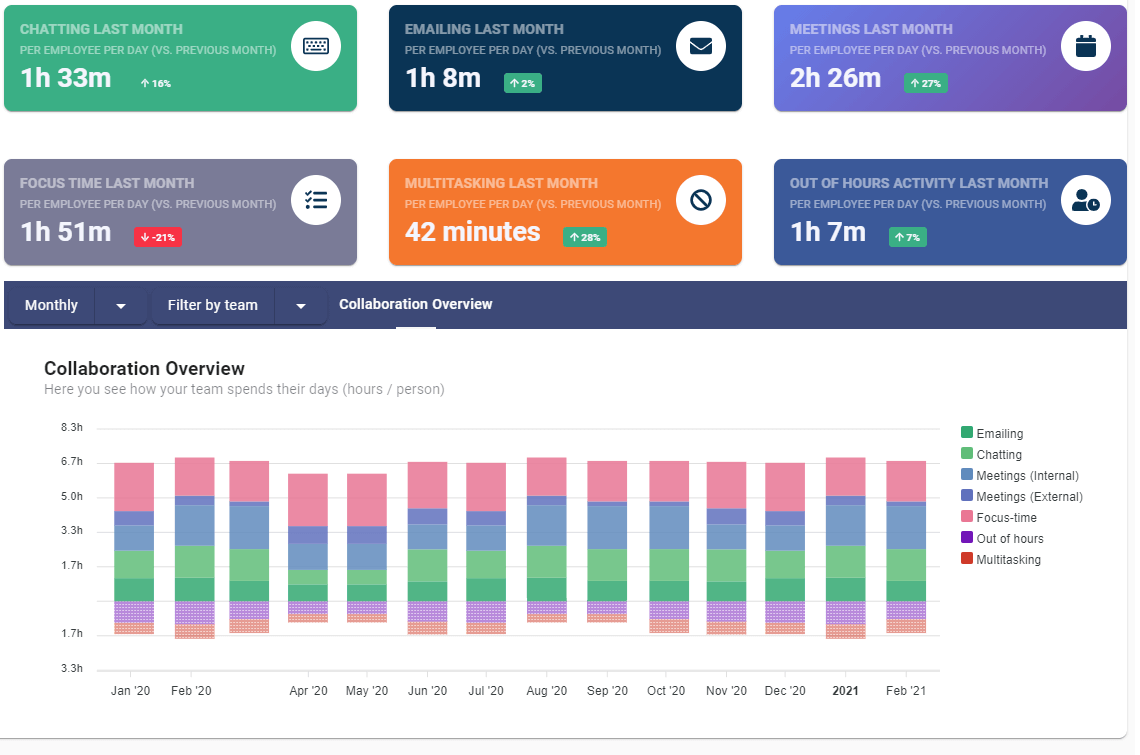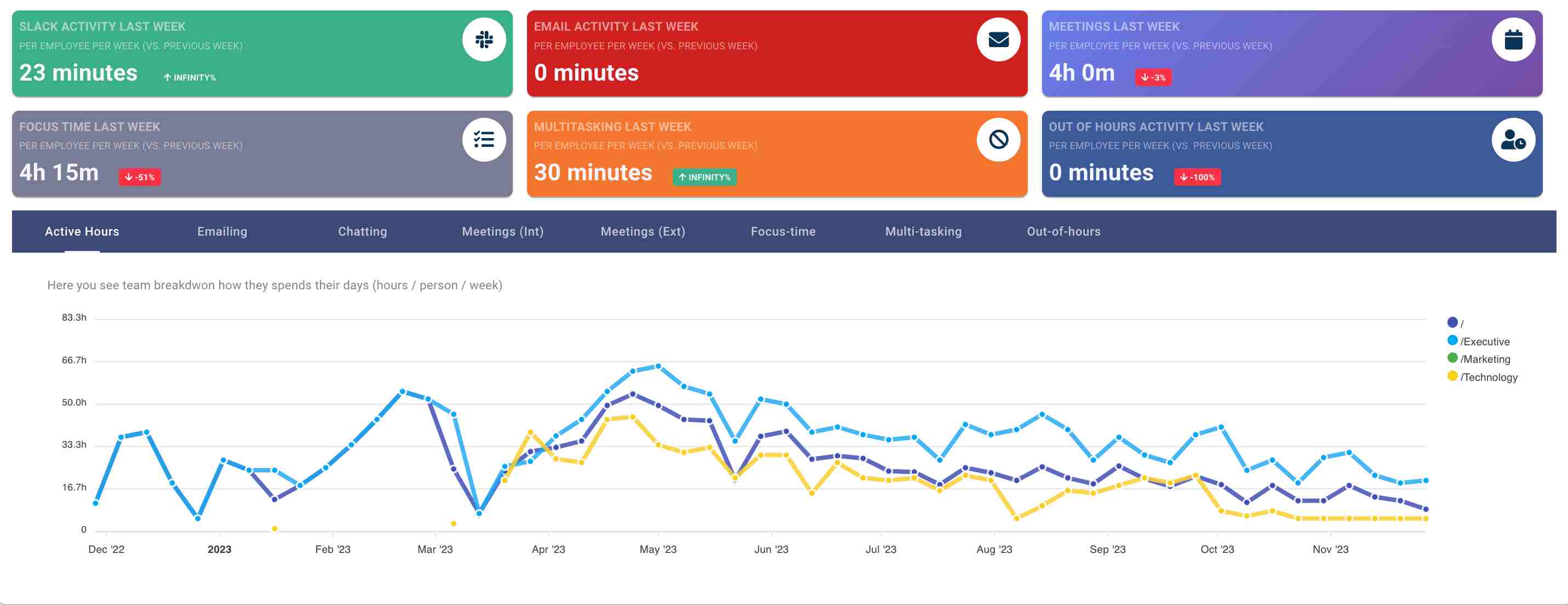Benefits of No Meeting Days
Increase your workplace productivity with the benefits of no-meeting days. Enhance focus, boost employee productivity, and improve well-being with...
Discover how meeting-free days can enhance productivity and employee well-being in organizations, and how to effectively implement them.
In an era where the efficiency of work processes and employee well-being are growing in importance, the concept of meeting-free days is gaining significant traction in organizations. These designated days, free from the usual schedule of meetings, aim to provide employees with uninterrupted time to focus on deep work, fostering creativity, and enhancing productivity. This approach addresses a common challenge in today's fast-paced work environment: meeting overload.
Meeting-free days represent a shift towards a more mindful and efficient way of working. By setting aside specific days where meetings are off the table, organizations encourage employees to delve into their tasks with greater focus and less fragmentation.
The concept of meeting-free days is rooted in a fundamental understanding of modern workplace dynamics. In a typical office setting, employees often find themselves navigating through masses of back-to-back meetings, which can lead to significant stress and reduced productivity. The rationale for establishing meeting-free days lies in addressing this very issue.
By setting aside specific days devoid of meetings, organizations provide their workforce with uninterrupted time to engage in deep, focused work. This practice has been shown to enhance overall productivity, foster creativity, and reduce workplace stress.

A key benefit of meeting-free days is the enhancement of employee focus. Research indicates that it takes an average of 23 minutes for an individual to regain focus after an interruption, such as a meeting. By reducing these interruptions, employees can delve deeper into their tasks, leading to higher-quality work and innovation.
Additionally, the absence of meetings on certain days allows for a more flexible work schedule, accommodating diverse working styles and promoting a better work-life balance. A study by the University of California, Irvine, found that employees who experienced fewer interruptions reported significantly lower stress levels. This underscores the importance of such initiatives in fostering a healthier work environment.
The successful implementation of meeting-free days begins with a thorough assessment of the current meeting culture and thoughtful preparation. Here are steps to ensure a smooth transition to incorporating meeting-free days into your organization's routine:
Assess Current Meeting Culture
Utilize tools like Flowtrace to analyze the existing meeting culture within your organization. Look at metrics such as the number of meetings per week, average meeting duration, and the distribution of meetings across different days. This initial assessment is crucial in understanding the impact meetings are currently having on productivity and employee well-being.
Identify the Most Effective Days for Meeting-Free Days
Based on the assessment, choose the best days for implementing meeting-free days. Consider days when the meeting load is traditionally lighter or when deep work would be most beneficial. The goal is to select days that minimize disruption and maximize productivity.

Prepare the Team
Communication is key. Clearly explain the purpose and benefits of meeting-free days to the team. Provide guidelines on what should be done during these days, such as focusing on individual tasks, deep work, or project milestones that require uninterrupted attention.
Set Expectations and Guidelines
Establish clear guidelines on what constitutes a meeting and what is allowed during meeting-free days. Define exceptions, if any, such as critical or emergency meetings.
Implement Gradually
Start with one Meeting-Free Day per month or quarter and gradually increase the frequency based on feedback and effectiveness.
Gather Feedback and Make Adjustments
After implementing meeting-free days, actively seek feedback from employees. Use this feedback, along with data from Flowtrace, to make adjustments and improvements.
Well-planned meeting-free days that organizations implement, often see an increase in employee focus time by up to 15%. This statistic highlights the potential for significant improvements in productivity and employee satisfaction.
By carefully planning and preparing for meeting-free days, and leveraging the insights provided by Flowtrace, organizations can effectively reduce meeting overload, enhance employee focus, and ultimately foster a more productive work environment.
The implementation of meeting-free days within an organization requires careful planning, clear communication, and the establishment of certain ground rules to ensure its success.
The first step is to identify the most suitable days for these meeting-free periods. This selection should be based on an understanding of the team's workflow and deadlines. For instance, mid-week days might be more effective than Mondays or Fridays, which are often used for planning and wrapping up weekly tasks.
Once the days are selected, it is crucial to communicate the purpose and expectations of meeting-free days to the entire team. This involves setting clear guidelines on what constitutes a 'meeting' and what activities are permissible during these days. For example, one-on-one check-ins or critical project discussions might still be allowed, provided they are brief and essential.
Leadership plays a pivotal role in ensuring adherence to these new norms. They must lead by example, respecting the meeting-free time and encouraging their teams to do the same. This includes refraining from scheduling meetings on these days and not sending meeting requests for future dates.
The successful implementation of meeting-free days is contingent on the ability to measure their impact and make necessary adjustments. This measurement is crucial to ensure that these days are effectively enhancing productivity and employee satisfaction, rather than merely disrupting the usual workflow.
To accurately assess the impact of meeting-free days, organizations should consider both quantitative and qualitative metrics. On the quantitative side, metrics such as the number of tasks completed, the time spent on deep work, and overall team output can provide tangible evidence of increased productivity.

Qualitatively, employee satisfaction surveys and feedback sessions are essential to gauge the workforce's perception of meeting-free days. These surveys can reveal insights into how these days affect employee stress levels, job satisfaction, and overall work-life balance.
Maintaining the effectiveness of meeting-free days over time requires a strategic approach and a commitment to continuous improvement. The key to sustaining these practices lies in embedding them into the organizational culture and regularly revisiting their impact and relevance.
Flexibility and Adaptation
One size does not fit all when it comes to meeting-free days. Different teams or departments may have varied needs and workflows. Therefore, it's essential to be flexible and open to adapting the approach based on feedback and data insights. This could mean adjusting the frequency of meeting-free days or even their format based on what works best for different teams.
Leadership Commitment and Role Modeling
Leaders play a crucial role in sustaining meeting-free days. By consistently respecting these days, leaders set a positive example for their teams. Their commitment can encourage wider acceptance and adherence across the organization.
Communication and Reinforcement
Continuous communication about the purpose and benefits of meeting-free days helps in keeping the momentum. Highlighting success stories or improvements in work-life balance can reinforce the value of these days to the team.
Regular Review and Feedback
It's important to regularly assess the effectiveness of meeting-free days. This can be done through employee surveys, productivity metrics, and team feedback sessions. Understanding how these days are impacting work output and employee morale is crucial. For instance, Flowtrace’s analytics can reveal if these days are leading to better focus and higher productivity, or if adjustments are needed.

Utilizing Flowtrace for Continuous Improvement
Flowtrace's meeting analytics and insights are invaluable for sustaining meeting-free days. By leveraging data on meeting patterns, productivity, and team engagement, organizations can make informed decisions to refine their approach. Flowtrace’s recommendations based on industry benchmarks and management metrics provide actionable steps for continuous improvement.
Integration with Other Productivity Initiatives
Meeting-free days should not exist in isolation but be part of a broader productivity and well-being strategy. Integrating these days with other initiatives like deep work hours or wellness programs can enhance their effectiveness and acceptance.
By following these best practices and leveraging tools like Flowtrace, organizations can ensure that meeting-free days remain a valuable and effective part of their work culture, contributing to long-term productivity and employee satisfaction.
The integration of meeting-free days into the organizational culture represents a significant step towards enhancing both employee well-being and overall productivity. These designated days, free from the regular schedule of meetings, offer employees uninterrupted time for focused work, leading to a more engaged and efficient workforce. The long-term benefits include encompassing improved focus, reduced burnout, and a boost in creativity and innovation.
For organizations, the implementation of meeting-free days can translate into tangible business outcomes. Flowtrace enables leaders to make data-driven decisions about when and how to implement meeting-free days. The insights offered by Flowtrace help in fine-tuning these initiatives to align with the unique needs and rhythms of each team, ensuring that the benefits are maximized.
Increase your workplace productivity with the benefits of no-meeting days. Enhance focus, boost employee productivity, and improve well-being with...
Struggling with too many meetings at work? Learn how to optimize meeting practices, avoid meeting overload, and improve team productivity in this...
Discover the impact of excessive meetings on productivity and learn how to optimize meeting frequency for success. Find out how to foster a culture...